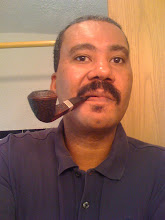Disclaimer: this post will be of most interest to Catholics. It describes one of our methods of daily prayer. That said, we don't claim a monopoly on it and there's nothing stopping you from also using this method if you are a Christian who isn't Catholic. In fact, the Anglicans (Episcopalians in America) even have their own version of it. I am a layman, so if you happen to be a Catholic priest or religious reading this, please let me know in the comments if I've left anything out or got something wrong.
In this blog post, I will be talking about the Divine Office, also known as the Liturgy of the Hours. A probably oversimplified description of it is that it's the official prayer book of the Catholic Church. I will describe it in more detail, discuss why you should use it, and tell you how to decide which form to use, and how to get started.
Let's start with more details about the Divine Office. The Divine Office gives you prayers for various times throughout the day. It includes prayers, Bible passages, and writings of the Church Fathers (for non-Catholics, these are prominent early Christians), but is centered around the Psalms. There are two forms in the Catholic version; one will include most of the Psalms every four weeks, the other will include all of the Psalms once a week.
If you're Catholic, you may be thinking "Why do I need this? I already pray the Rosary every day." My short and probably oversimplified answer is that they are two different types of prayer. The Rosary is a personal devotion, while the Divine Office is what I'll call collective prayer. The real term for it is liturgical prayer, but it really boils down to the same thing: you're not just praying by yourself, you are praying with the entire Church. People around the world are saying the same prayers and celebrating the memory of the same saints.
Still with me? Great! Now let's talk about which form to use. There are two if you're Catholic: the Liturgy of the Hours (also knows as Ordinary Form), which is prayed in the vernacular (I have the English version), and the Roman Breviary (also known as Extraordinary Form), which is prayed in Latin. If you're religious, you don't need me to tell you about the Divine Office, but for the benefit of the rest of my readers, some (maybe all, I'm a layman so I don't know) of the religious orders have their own versions. The Liturgy of the Hours is the form that most Catholics should use, but if you go to Traditional Latin Mass, you may want to consider using the Roman Breviary.
If you want to try it, you may want to start with one of the apps that are available in Google Play or the Apple Store that will lay out everything for the day for you. I don't have any specific recommendations for the Liturgy of the Hours, but I can without reservation recommend divinumofficium.com for the Extraordinary Form.
If you prefer working with a physical book, it will be more work because you have to navigate through the book yourself, and the books can be expensive. I have the four-volume Liturgy of the Hours set, which cost $130 US, and the Roman Breviary, which cost $400 US. The Roman Breviary comes with a little instruction booklet, and a set of more detailed instructions at the beginning. The Liturgy of the Hours books also has a set of instructions at the beginning of the first volume, but if you want to use that, I would recommend also picking up The Divine Office for Dodos, which is the book I used when I got started with it last year. You can also ask questions at https://www.reddit.com/r/divineoffice/, and there are both priests and experienced laity who post there and can help you.
That's my introduction. I hope you'll try it, and continue to pray the Rosary. I'll post again with more details about the Liturgy of the Hours.




No comments:
Post a Comment